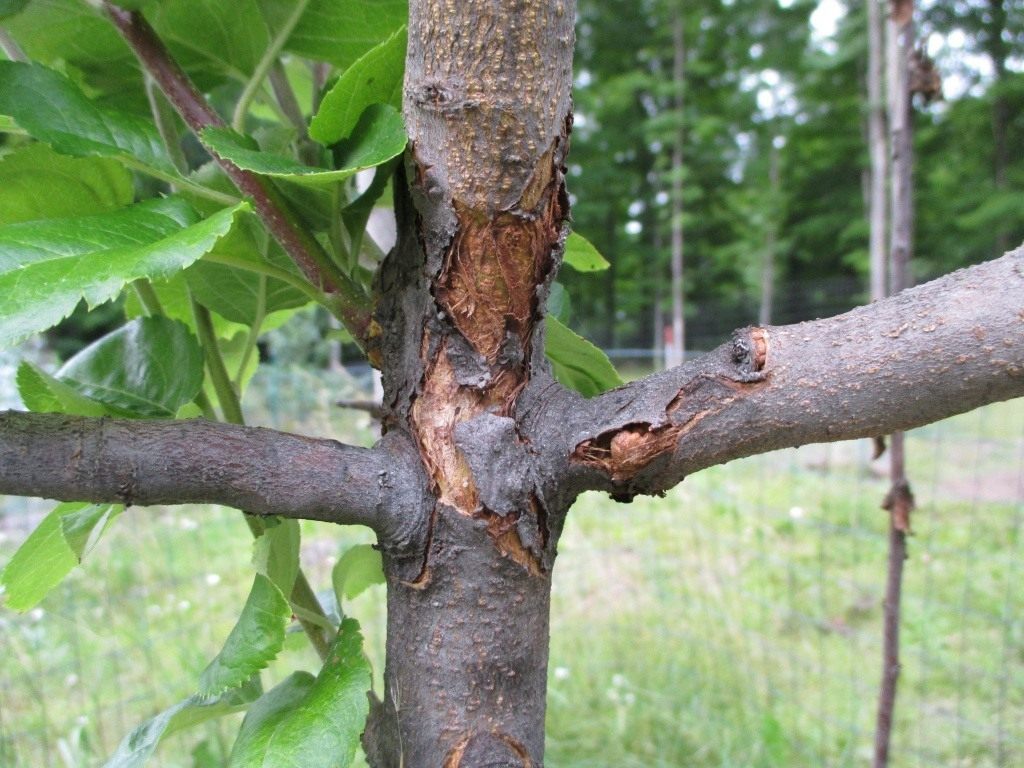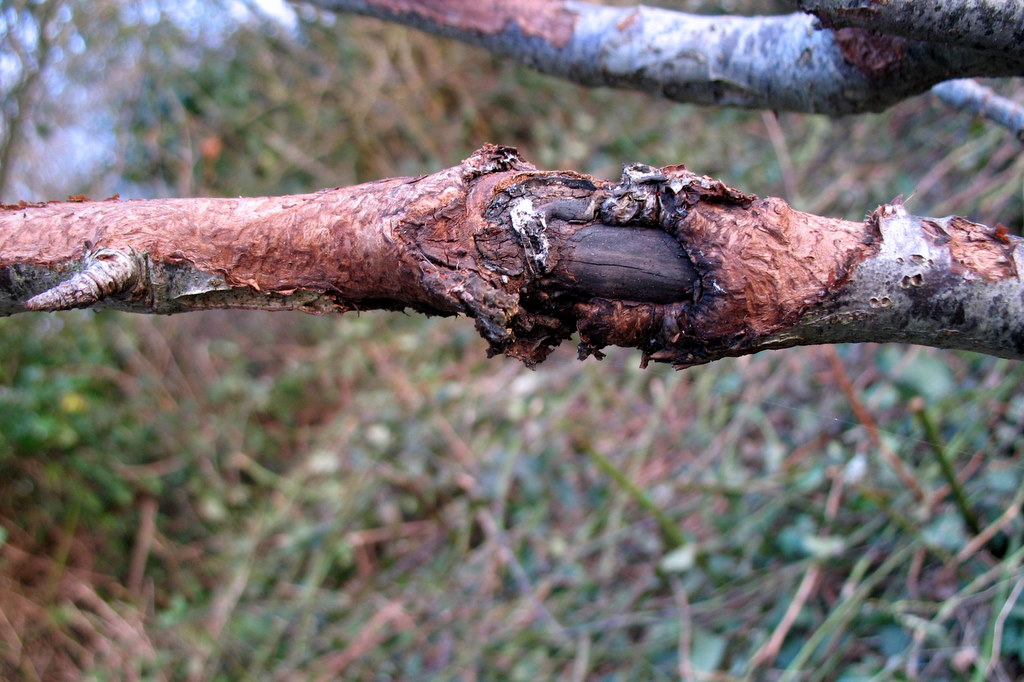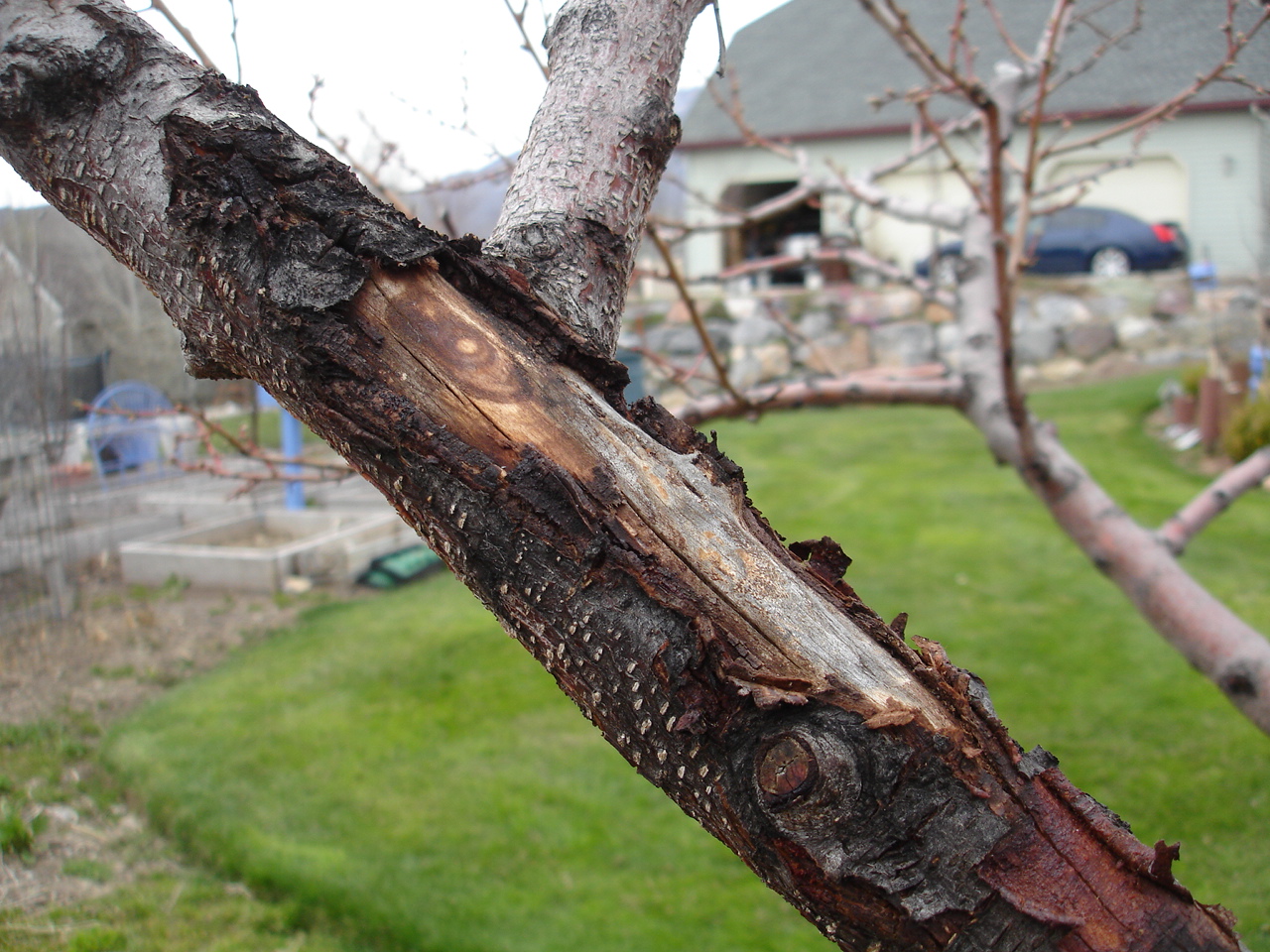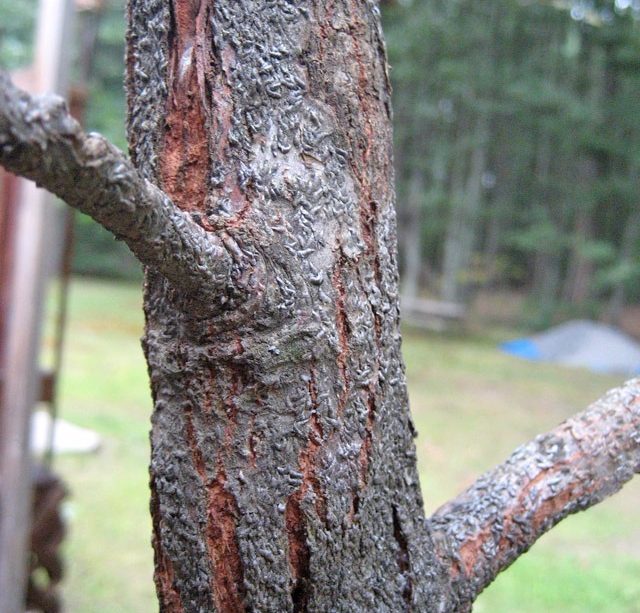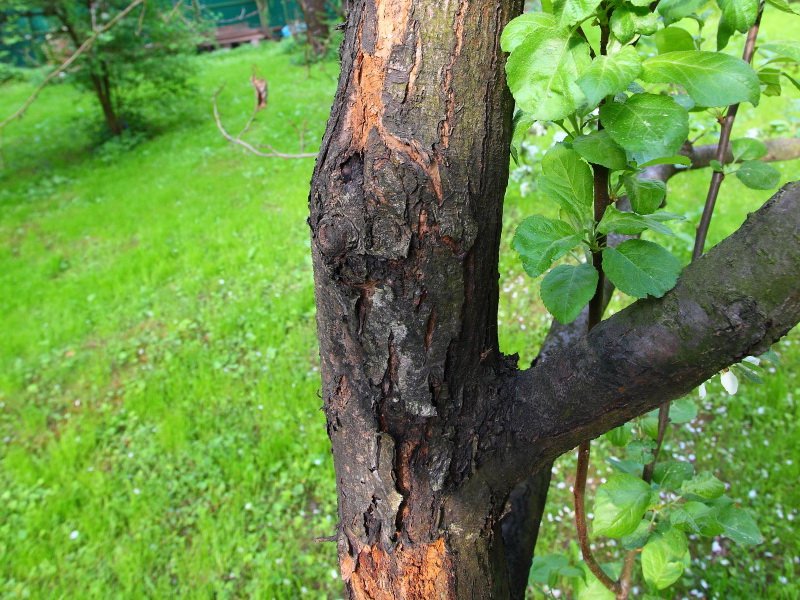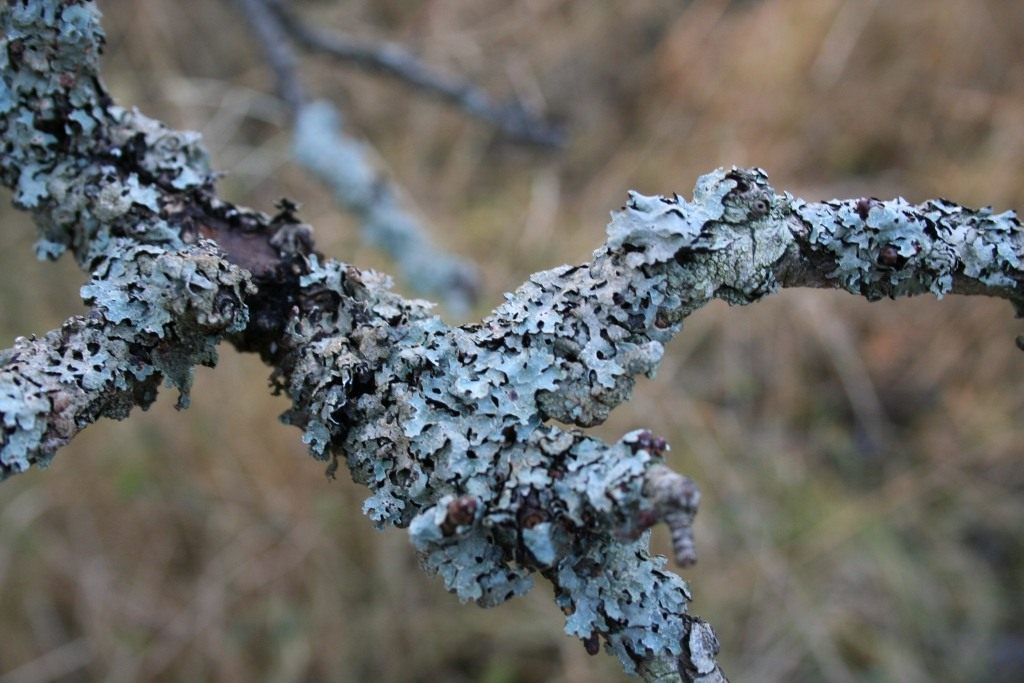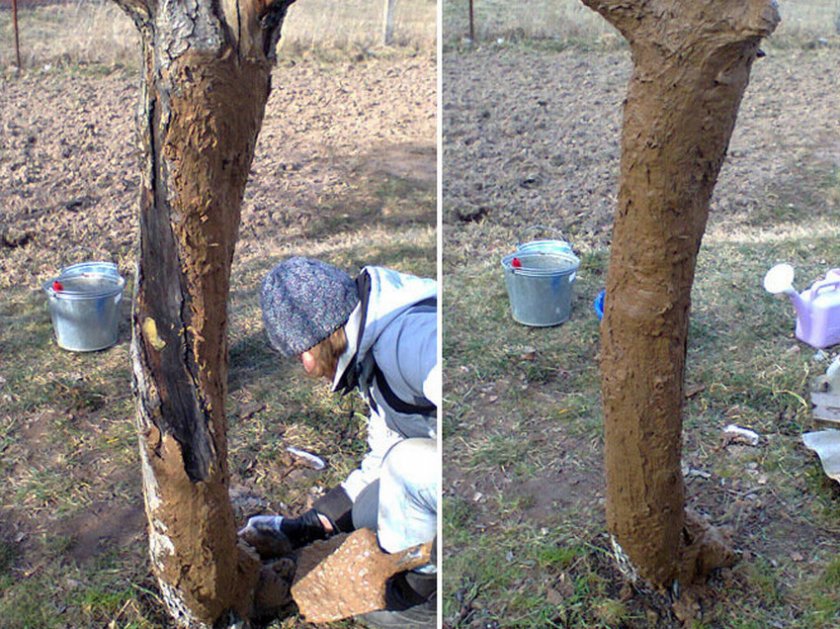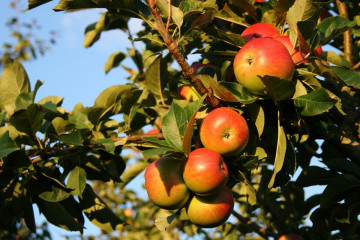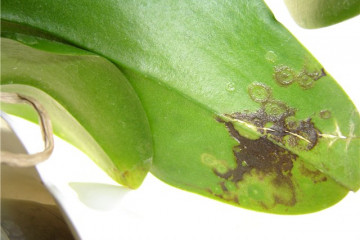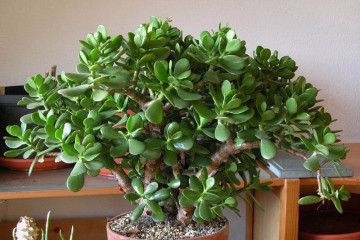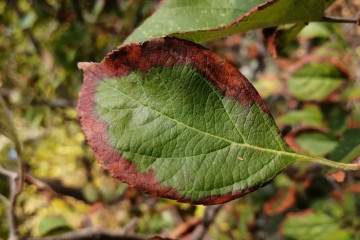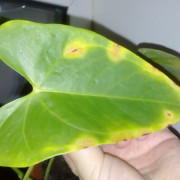How to save an apple tree with a damaged trunk - ways to restore the bark
Content:
Owners of a garden plot with apple trees are wondering how to increase yields. For this purpose, various dressings are introduced into the soil, regular watering is carried out according to the established schedule. However, it is worth closely monitoring the condition of the plants themselves. The most common case is tree trunk problems. As a rule, this is due to various factors. Therefore, the question naturally arises of how to save an apple tree with a damaged trunk. To understand what needs to be done, you should know the description of a number of diseases and how they manifest themselves.
The harmful effects of diseases on the bark of trees
The bark covering the trunk of the tree is its protective shell. This is the first step in protecting the plant from external influences. Violation of the integrity leads to a weakening of the plant, which reduces flowering and, accordingly, the yield will be less.
The nature of the wound
To choose the right decision to get rid of the cause that caused damage to the tree bark, first it is worth understanding its nature. Two groups can be distinguished here:
- mechanical damage;
- infectious lesion.
Treatment methods are different in each case, therefore, it is necessary to carefully consider the definition of the nature of the disease. This is the only way to increase the effectiveness of therapy.
In addition, any injury, and even more severely open, is regarded as an entrance gate for various infectious pathogens and pests. It is already known how this can end, therefore it is necessary not only to feed and water the mothers, it is important to pay attention to the change in the bark.
Mechanical damage
Apple tree trunks can get such wounds as a result of rodent attacks or natural disasters (strong gusts of wind, hail, exposure to high and low temperatures). Improper crown formation also leads to bark damage.
But the cortex does not always suffer as a result of direct physical impact. In some cases, there are natural reasons for this. The old "skin" is covered with cracks and peels off, and a renewed coating appears instead. Such a process does not require human participation, although it will take some time.
Rodents
You can find out about this by the shabby bark near the surface of the earth. If only the upper layer of the bark is damaged, this indicates mouse bites, hares leave deeper marks.
To protect the trees, a special structure is made that resembles a cap. Usually corn, reeds, branches of conifers are used. They tightly wrap the trunk of the tree, as well as the branches of the lower tier. In the spring, the shelter must be removed.
Big branch bummer
You should know how to save an apple tree if the trunk is broken by the wind and split.In this case, the tree receives an extensive wound and it is difficult for it to recover on its own.
You need to act immediately and first you need a disinfection procedure. After that, the wound should be treated with first aid for plants (garden varnish, oil paint based on drying oil, Bugorkov's balm). Additionally, the wound can be lubricated with a prepared mixture of "Kornevin", "Immunocytophyte", glue BF-6.
Cooking method:
- To begin with, mix three ingredients together - "Kornevin", "Fundazol", wood ash.
- Add crushed "Immunocytofit" tablet.
- Add BF-6 glue. The mixture should have the consistency of thick sour cream.
The wound is covered with such an ointment, and you need to capture a little part of the healthy bark. The composition is not suitable for long-term storage.
Agrotechnical techniques
Sometimes the gardener himself can harm the hearth trees. The tree tries to heal the inflicted wounds on its own in a short time. At the same time, it is better to be careful while performing various operations so as not to damage the branches or the trunk. You should not be in a hurry during pruning and crown formation.
Burn and frostbite
Exposure to changes in temperature also negatively affects the condition of the tree bark. A sunburn (from April to May) is usually indicated by the peeling of the bark in large pieces. At the same time, the branches themselves acquire a pinkish tint and look burnt.
How to treat apple tree bark damage
The problem can be prevented by whitewashing. It is optimal to use special garden solutions or water-based paint.
Deep cracks testify to the effect of low temperature, although the color of the inner part of the shoot does not change. In this case, intervention from the outside is not required, the tree also copes on its own. During the period of sap flow, the cracks are filled with secreted fluid, due to which natural healing occurs. It is better not to interfere with this process, it is better to treat the wounds after they are completely filled with wood sticky mass.
Restoration of the bark after mechanical stress
It all depends on the degree of damage. Broken branches are cut to the base, after which the cuts are smeared with garden broth. It also treats small cracks, although the tree itself will heal them.
Large injuries require human intervention. To begin with, the affected areas must first be well cleaned, especially when insect pests have settled there. Next, it is required to disinfect with a weak solution of copper sulfate or another agent with the inclusion of copper.
To stimulate healing, wounds should be covered with a mixture of yellow clay and mullein (1: 1). It is permissible to use clean clay, which must be softened in advance.
Usually, such measures are sufficient to avoid serious consequences of the injuries inflicted. Trees have a good regeneration capacity and in most cases they regenerate on their own during the season.
Infectious diseases
If a tree has been attacked by pathogens, the consequences can be quite serious. Therefore, you should study in advance how to restore the bark on an apple tree in this case. Otherwise, you can forget about the harvest.
Often, the bark of trees is affected by fungi or bacteria. If the affected tree is left untreated, the infection will lead to its death, and then spread throughout the garden.
Black cancer
This is a fungal disease caused by the pathogen Botryosphaeria (Botrispheria).In countries with a temperate climate, there is a high risk of contracting such an infection. The diet of the fungus includes not only living, but also dying tissues.
The spreading rate is high, which leads to a rapid infection and death of the entire garden. Botrispheria settles not only on apple trees - almost all fruit crops are under threat.
At the initial stage of fungal infection, the bark is covered with cracks with brownish dots. In the future, they become spots that deepen, expand and become covered with a black coating (as if the wood was charred). The branches appear burnt, and the leaves darken, dry out and curl. The final stage of the disease is accompanied by the formation of black rings, which means that the tree has died.
European cancer
It is also called common and, unlike its black counterpart, develops more slowly. The causative agent is the fungus Nectria galligena, which hides in the bark of a tree for the winter, and its vigorous activity begins in the spring. Infection can occur due to damage to the bark (even the smallest), improper pruning of branches or grafting of trees.
The disease itself proceeds in an open or closed form. In the first case, deep damage is formed that reach the core of the wood. Their contours outwardly look like tumors. When infected with a closed fungus, small growths form on the bark, which hide the wound. Subsequently, they die off, exposing the wood. The spores remaining for wintering form a thickening, where a whole colony of the fungus is formed. Its elimination leaves a cavity in the tree.
Bacterial cancer
Another very dangerous disease caused by gram-negative rods. It is usually introduced with new seedlings that have not been properly treated. The affected area is covered quickly and it is extremely difficult to cure such a pathology. It is necessary to start therapy at the slightest sign, otherwise the disease will completely dry out the tree.
The symptom is the appearance of small spots of a green-brown hue, which subsequently turn into soft blisters. Inside these blisters, tissues begin to rot. In the absence of treatment, a crust forms on top, and inside the active development of the fungus occurs. As a result, the leaves begin to blacken, mummify, the young branches dry out, and the flowers wither.
Cytosporosis
The causative agent of this fungal disease belongs to the genus Cytospora. Its spores are able to penetrate into the deep layers through cracks and small wounds. The development and spread of infection is rapid - without proper treatment, the bark dries out in only one season. The fungus is extremely aggressive and affects both the bark and the wood itself.
The defeat by cytospores is issued by blackened ulcers, framed by gray tubercles. As a result, the bark changes greatly, becoming spongy. The leaves, along with the ovaries on the branches with the fungus, dry out, and then curl and fall off. When the pathogen penetrates deeply into the wood, a raspberry or reddish liquid begins to ooze from the cambium.
Fruit therapy course
Now about how to treat an apple tree if the trunk is damaged. Typically, a common scheme is used for many infectious diseases (including the examples listed above). It is even possible to draw a comparative parallel here with the mechanism for treating wounds of mechanical origin. But depending on the causative agent of a particular infection, a number of additional operations are required.
In general, the algorithm is as follows:
- For a start, the wounds are cleaned well.
- Next, you need to cut off the affected areas. It is necessary to capture 2-3 cm of living and untouched tissue by the pathogen, since it can remain there as well.
- Now you can start disinfection using antiseptic drugs (copper, iron vitriol, potassium permanganate). If the infection is of fungal origin, treatment with fungicidal preparations should be carried out.
- After the disinfection procedure, the wound must be closed with clay, oil paint, or a garden broth must be used for this purpose.
- Spray the whole tree with fungicides, including neighboring plants.
- All collected waste should be burned away from horticultural crops.
- Disinfect the instruments used.
Diseases of an infectious nature are dangerous due to the high rate of spread and development of pathogens. Fungi are easily spread by water, wind, birds, and for wintering they choose the soil for shelter.
Lichens
Some gardeners, especially beginners, confuse these types of organisms with some kind of disease, which they really are not. Lichens themselves do not pose any threat to fruit trees, but the entire trunk can be covered with a colored carpet. At the same time, insect pests like to hide in them for the winter. It is better to protect plants from such an unwanted neighborhood.
A scraper is usually used to remove living organisms. A metal brush will also work, but it can easily damage the bark of trees, which is highly undesirable. Lichens are removed quite quickly, but sometimes difficulties can arise. Then you should first spray the populated area with soapy water. After 20 minutes, they will be easily peeled off without the use of force.
In case of annular damage to the bark, to save the tree and restore sap flow, it is worth using the "bridge" inoculation. Only this technique works effectively only during early spring, when the plants are dormant. The grafting material must be harvested before the kidneys open.
An example scenario of how to "build up" the bark in a way:
- In winter, in the garden, it was noticed that the bark of the apple tree was torn off in a circle from the bites of hares.
- Measures are taken in a timely manner so that the apple tree does not begin to dry out. To do this, putty is applied to the damaged area (oil paint is used in severe frost). After that, it is wrapped in burlap until spring arrives.
- Cuttings are being prepared for grafting.
- When sap flow begins inside the plant, it's time to plant bridges at a distance of 3 cm from each other. In order for the cambium to match, it is imperative to remove the kidneys.
- If not all the cuttings have taken root, then the next year it is worth planning a second procedure. This will improve the nutrition of the apple tree.
In order for a garden plot to bring a good harvest, it is necessary to regularly monitor all its crops. This will allow you to quickly notice changes, even the smallest, while the trees grow and develop.
Preventive actions
Diseases of the bark of an apple tree are easier to treat if prophylaxis is carried out first. In particular, on a regular basis, spray fruit trees (not only an apple tree, but also all other crops) with fungicides, including preparations for getting rid of insect pests (bark beetles, weevils and other representatives).
New seedlings should be regularly inspected for any unwanted changes. Any intervention requires a disinfection procedure.
Do not ignore the fact of violation of the integrity of the apple tree bark, since this is clear evidence of outside interference in the plant's body, which in turn leads to undesirable consequences, up to the death of the tree. Only timely treatment will save the plant and preserve the yield. One should not forget about preventive measures as well.
